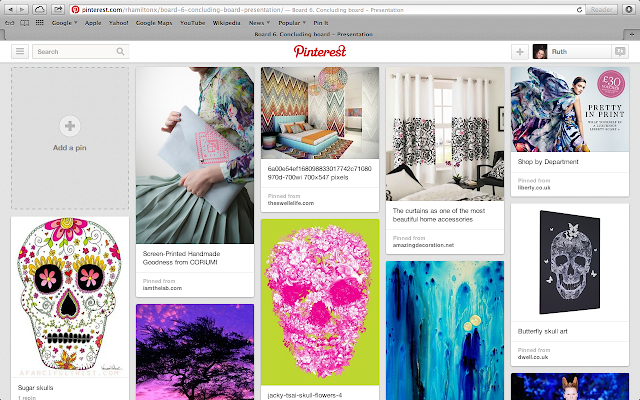Here are screenshots from each of my boards plus the links to see more of the pins on each of the boards:
Board 1 - Craft Skill
The craft skill I want to specialise in is print with a bit of embroidery along side.
http://pinterest.com/rhamiltonx/board-1-craft-skill/
Board 2 - Colour Palette
The colours I wanted to use were rich, bold colours.
http://pinterest.com/rhamiltonx/board-2-colour-palette/
Board 3 - Inspiration
Although my inspiration was skulls I didn't want to go down a dark route with them so not only did I look at flat prints of them but also more 3D versions and sugar skulls which were often 3D or embroidered/embellished.
http://pinterest.com/rhamiltonx/board-3-inspiration/
Board 4 - Who/What is it for?
This board was designed for what I could make my prints into and where I would like them to be sold.
http://pinterest.com/rhamiltonx/board-4-whowhat-is-it-for/
Board 5 - Display
This board was for displays I like which I could then take inspiration for to display my own work.
http://pinterest.com/rhamiltonx/board-5-display/
Board 6 - Concluding Board
This was the board I showed for my presentation which includes 2 pins off each of my previous boards, to sum up what my personal project will be.
http://pinterest.com/rhamiltonx/board-6-concluding-board-presentation/





































